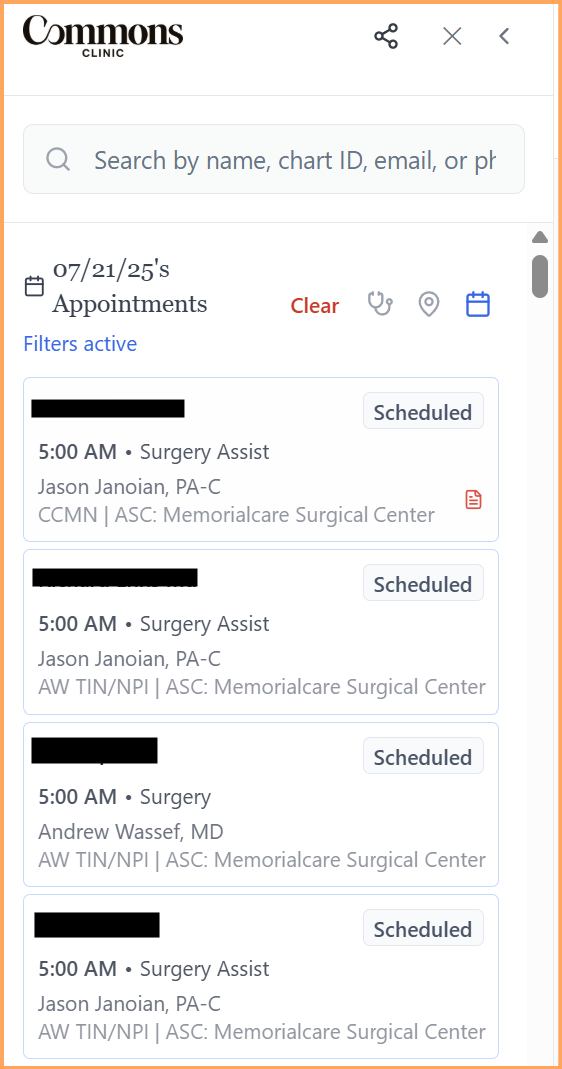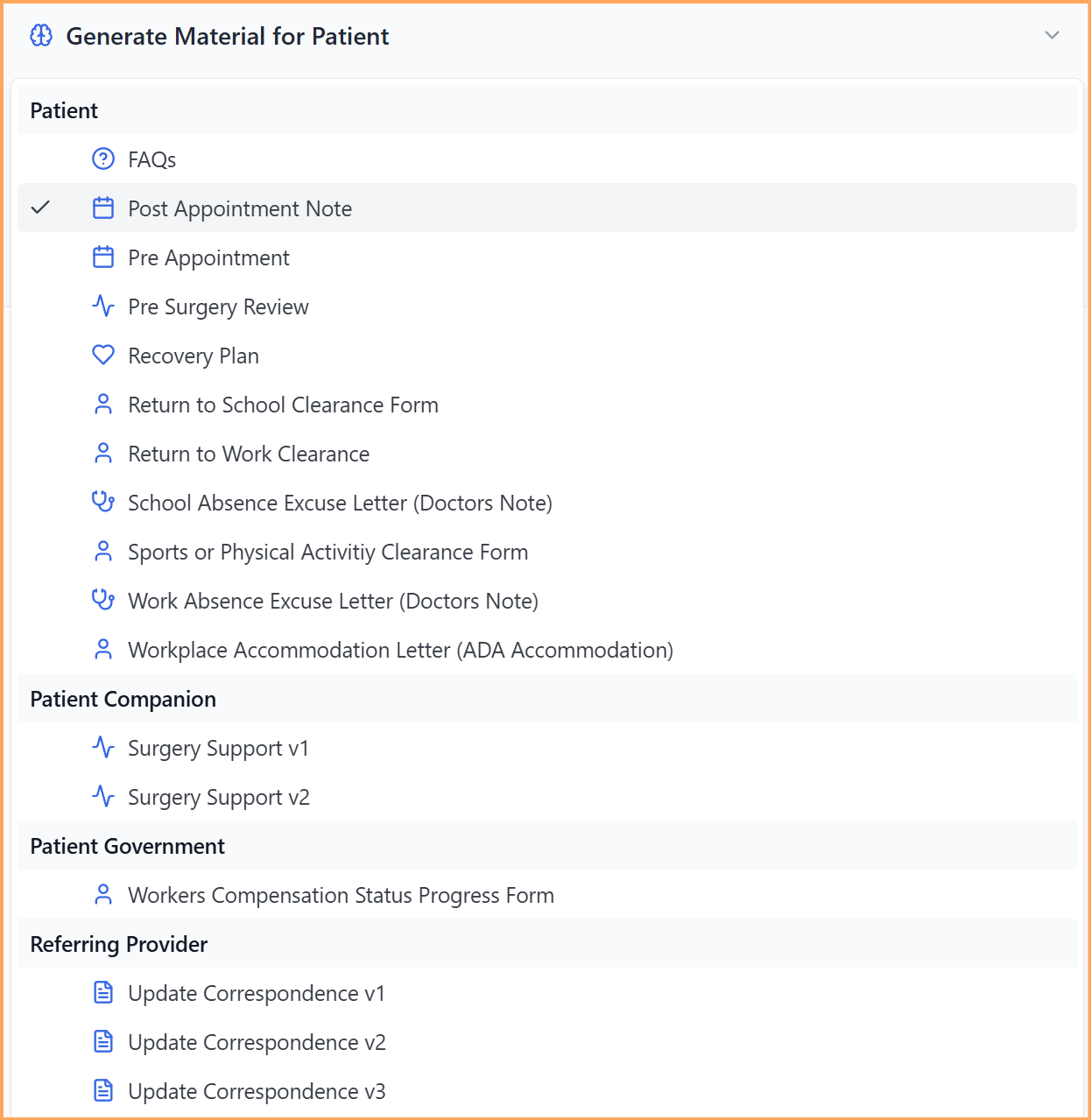I could be wrong, but this whole artificial intelligence thing might just be here to stay. Each day spawns another AI startup and more declarations of tech-centric healthcare future. Digital health is back, and AI is leading the way. Of the $6.4 billion raised by health tech companies in H1 2025, $3.95 billion (62%) went to AI-enabled companies.
For better or worse, if you’re looking to raise money, you better have an AI story. But, what if AI is part of the story and not the story itself?
Only the world’s biggest Luddite would call AI a passing fad — but we’ve seen this level of hype before. The market is still sorting itself out, but the growing quality and diversity of foundational models may take the wind out of a lot of sails. (Hello, GPT-5.)
The question is: how do we cut through the noise to determine best use cases, biggest impacts, and highest yield applications? At this stage, there may be no single right answer. Ambient scribes emerged as early winners proving market demand for tools that reduce clinician burden. Momentum for AI-enabled workflow is building.
At Commons, our ethos is to use technology not only to deliver cutting-edge procedural treatments but also to make care more engaging. We believe tech should elevate the doctor-patient relationship and remove barriers instead of creating them. Intentional implementation of AI is a critical part of that mission.
This week in The Surgeon’s Record, I’m excited to share a first look at CommonsAI, our homegrown AI solution. We chose to build, not buy — giving us full control over design, integration, and iteration. It also frees us to focus on impact, not monetization.
The goal is simple: develop technology that works for us, not against us.
The Problem to be Solved
Healthcare’s adoption of technology has lagged behind nearly every other industry. [Insert fax machine joke here.] The tech we do have hasn’t exactly left doctors or patients asking for more. Electronic medical records are the prime example.
EMRs weren’t a bad idea — digitization of medical records was inevitable — but their rollout prioritized billing and compliance over usability and interoperability. What we needed was an easy-to-use repository of information with straightforward CPOE. What we got were fragmented systems that frustrate everyone who touches them.
The best technology fades into the background. It becomes part of your daily routine so seamlessly you barely notice it. But that takes time and iteration.
Thirty years ago, the internet meant noisy dial-up modems, “You’ve got mail!” alerts, and glacial load times. We printed MapQuest directions and stuck Garmins to our windshields. Now we just shout an address at Siri. Tech in other industries has evolved steadily toward speed, simplicity, and delight. Healthcare tech…not so much.
So how do we take EMRs down that same evolutionary path? How do we make healthcare technology as seamless and value-add as the tools we use everywhere else? Is AI the “killer app” that finally gets us there?
Instead of asking, “Did you fax that?” what if “that” identified and sent itself automatically?
These are the questions we set out to answer with CommonsAI.
Our Design Rationale
Our goal from the start was simple — replicate the clinician’s mental model. We wanted a system that mirrors how doctors actually think and organize information, not how EMR vendors decided they should think. That meant a clean, intuitive interface that intelligently surfaces the highest-yield information — with just enough customizability to make it feel personal.
We set out to solve the trickiest problems in clinical data: interoperability, record fragmentation, and information overload. CommonsAI pulls from every available source, synthesizes the signal without the noise, and hides complexity from the end user. No more hunting through a dozen PDFs for a single lab value.
Ambient listening has been a breakthrough for clinicians, but it’s good for so much more than simple note generation. We wanted more. Capturing the full nuance of a patient encounter — and surfacing follow-up tasks even when they’re implied rather than stated — is the foundation of a “smart medical office” we could only dream about a few years ago.
AI should help everyone in the room, not just the doctor. That means personalized patient materials, smart reminders, intelligent surgical scheduling, and meaningful correspondence to referring providers. It means replacing jargon-heavy, boilerplate after-visit summaries with clear, relevant information. And it definitely means no more endless clicks or trips to the fax machine for support staff.
We chose to build CommonsAI ourselves for a reason: tight, seamless integration. Doing so frees us to build a future where clinicians rarely touch a keyboard. Where high-value insights surface instantly. Where office visits are spent looking patients in the eye, not peering over a monitor. Where the EMR quietly fades into the background — and health tech becomes an enabler, not a barrier.
Technology is a core component of our novel care model. Baking it in by using our own ingredients was a natural choice.
Introducing CommonsAI
CommonsAI is our AI-powered front end that lives directly in the clinician’s workflow. It combines ambient listening capability, deep, comprehensive medical record data mining, and context-aware intelligence to:
Capture the patient encounter in real time
Summarize the full record into actionable insights
Identify tasks like follow-ups, gaps in care, surgical scheduling, and prior authorization needs
Generate notes that are compliant, accurate, and ready for review
Surface context at the right moment — relevant labs, imaging, history, all without digging
The goal is to create a high-yield interface with minimal touches and maximal throughput. The core components of CommonsAI are:
The Appointment pane: a clear, filterable list of patient appointments
A central Care Summary pane containing the Timeline and Detailed Case History: comprehensive, easily digestable patient information
The right-sided Clinical Intelligence Dashboard: a full suite of insights and patient care activities
This article provides a high level preview of the features and capabilities of CommonsAI. We’ll take a deep dive in future articles, complete with demo videos!
Appointments: Clean & Clear
The Appointments view is designed for speed and clarity. At the top, a universal search bar lets staff or clinicians find any patient by name, chart ID, email, or other identifier — no clicking through multiple menus.
Each appointment card surfaces exactly what matters most at a glance:
Time and visit type clearly labeled.
Provider and location always visible.
Status badges (“Complete,” “Ready for Provider”) so the whole team knows where the patient is in their journey without interrupting the flow of care.
Quick document access via the green note icon for instant chart review or documentation.
Filters are easy to apply and even easier to clear, so you can go from seeing your schedule to the entire practice’s in seconds. The design keeps the focus on high-yield information without clutter or distractions.
Care Summary: Efficient & Comprehensive
In building the center pane of the CommonsAI interface, we wanted to enhance efficiency while providing easy access to comprehensive, clearly organized patient information. Enter Care Summary: Timeline & Detailed Case History.
Timeline
Within CommonsAI, patient histories are automatically transformed into a clean, chronological Timeline that condenses years of clinical encounters, imaging results, therapies, and surgeries into an at-a-glance view. A “Focused/Full” toggle allows customization based on user preference. Critical information — easily accessible.
In this example, CommonsAI ingested a complete medical record spanning over five years — from the initial visit through multiple rounds of physical therapy, diagnostic imaging, medication management, and ultimately surgery. Post-operative milestones, objective outcome measures (such as the Oswestry Disability Index improving from 64% to 32%), and ongoing rehabilitation updates are clearly presented in reverse order.
The interface not only orders these events chronologically but also applies clinical summarization and terminology normalization, reducing chart review time and making it easier for providers to understand the patient’s trajectory. This enables workflow efficiency and faster decision-making. Less click time, more face time.
Detailed Case History
For a deeper dive, CommonsAI can instantly convert a dense, multi-year medical record into a clean, structured Detailed Case History. Information is fully organized under the familiar SOAP (Subjective, Objective, Assessment, Plan) framework or as a clinical Narrative, enhancing user control.
CommonsAI pulls from disparate EHR notes, specialist reports, and patient histories to produce a coherent, concise narrative covering all components of the medical record.
This output eliminates the need to manually dig through dozens of encounter notes while still providing depth of information. Providers get an instant, clinically accurate history that’s ready for peer review, utilization management submission, or care coordination.
By pairing this with CommonsAI’s Timeline view, users can access big-picture patient journeys and detailed narrative summaries all on one screen. Accelerating chart review frees clinicians to focus on patient care rather than paperwork.
Clinical Intelligence Dashboard: Productivity, Simplified
The right pane contains the Clinical Intelligence Dashboard, one-stop shopping for ambient recording, voice notes, generating patient and referring provider material, external document and medication review, and completing action items.
Generate Material for Patient
One of CommonsAI’s most powerful capabilities is its ability to instantly produce tailored patient- and provider-facing documentation. This interface acts like an intelligent assistant that understands the patient’s situation and the care team’s needs— then generates the exact materials required in seconds.
For patients, this includes post-appointment summaries, pre-surgery checklists, recovery plans, and clearance forms for work, school, or sports. It can also produce specialized letters, such as workplace accommodation requests or absence notes, without the clinician having to manually draft them. All generated documents are personalized to the individual patient — no more generic, boilerplate, low-yield After Visit Summaries.
Beyond patient-facing documents, CommonsAI supports other key stakeholders: “Patient Companion” resources to support caregivers, government-facing forms like Workers Compensation status updates, and referring provider correspondence—ensuring timely, accurate updates to the broader care network.
This feature reduces administrative load, minimizes turnaround times, and ensures consistency across all communications, freeing clinical teams to focus on patient care rather than paperwork.
Actions: Working Smarter, Not Harder
Each office visit can generate a litany of tasks: prescribing a medication, ordering physical therapy, scheduling surgery — or all of the above. Current workflows often involve several staff members, a combination of button clicks and paper forms, and coordination across multiple sites of care. Coordinating the entire process is complex, fragile, inefficient…and is highly likely to involve a fax machine at some point. CommonsAI’s Smart Actions capability is the killer app to solve the care coordination morass.
Sync Tasks auto-populates a list of actionable care items based entirely on ambient listening. The provider reviews and signs off on each task, sending it off to the next step in the care pathway. Order entry becomes a thing of a past. Surgical scheduling is seamless, not bottlenecked by legacy systems. Instead of falling through the cracks, care coordination items are surfaced and addressed in real time.
Better clinician experience. Better patient experience. Better care.
Version 2.0 and Beyond
At Commons Clinic, we’re bullish on the potential of AI in healthcare, not to replace doctors or provide “might be right” diagnoses, but to enhance care delivery. This article provides a high level glimpse of what we’re working on, but it’s only the beginning.
Future versions of CommonsAI will feature:
CommonsUM — An intelligent, data-backed approach to delivering high-yield care. UM gets a bad rap, not because it’s a bad idea but because it’s been poorly implemented. Instead of opaque, random criteria or prior auth shenanigans, CommonsUM will use AI to aggregate patient data to inform treatment plans and personalize care.
Smart Dashboards — You can’t change what you don’t measure. We do a lot of measuring in healthcare, but data is often unstructured, incomplete, and inaccurate. Ambient technology improves data capture. Synthesizing data from multiple sources at once creates a living, in-the-moment snapshot of quality, outcomes, and costs — the core components of value creation. No more guessing.
BackOfficeOS — AI-enabled call centers, agentic scheduling and care coordination, context-aware patient messaging, and more. You can’t build a next generation care model without bringing the back office into the 21st century. Patients expect
Long-Term Vision — We envision CommonsAI is a true operating layer for care delivery integrating seamlessly with EMRs, payer portals, and patient engagement tools. Our continuous learning modules will improve accuracy and personalization as data flows through the system.
The end user won’t know what hit them. And that’s exactly the goal — health tech that you didn’t know you needed but can’t live without.
At the same time, technology should enhance healthcare. We’re not trying to replace clinicians or make care less personal, we’re trying to humanize it.
These features aren’t necessarily novel. But deeply integrating them into a new care model is, especially when you consider doing it ourselves. CommonsAI becomes a vehicle for better care that keeps patients and doctors in the driver’s seat.









Hey Ben, is it open source or a paid SaaS platform?
CommonsAI?? I’m sold 👏🏽👏🏽 Amazing stuff🥰, kudos to the entire team for this mastermind invention. 👏🏽👏🏽